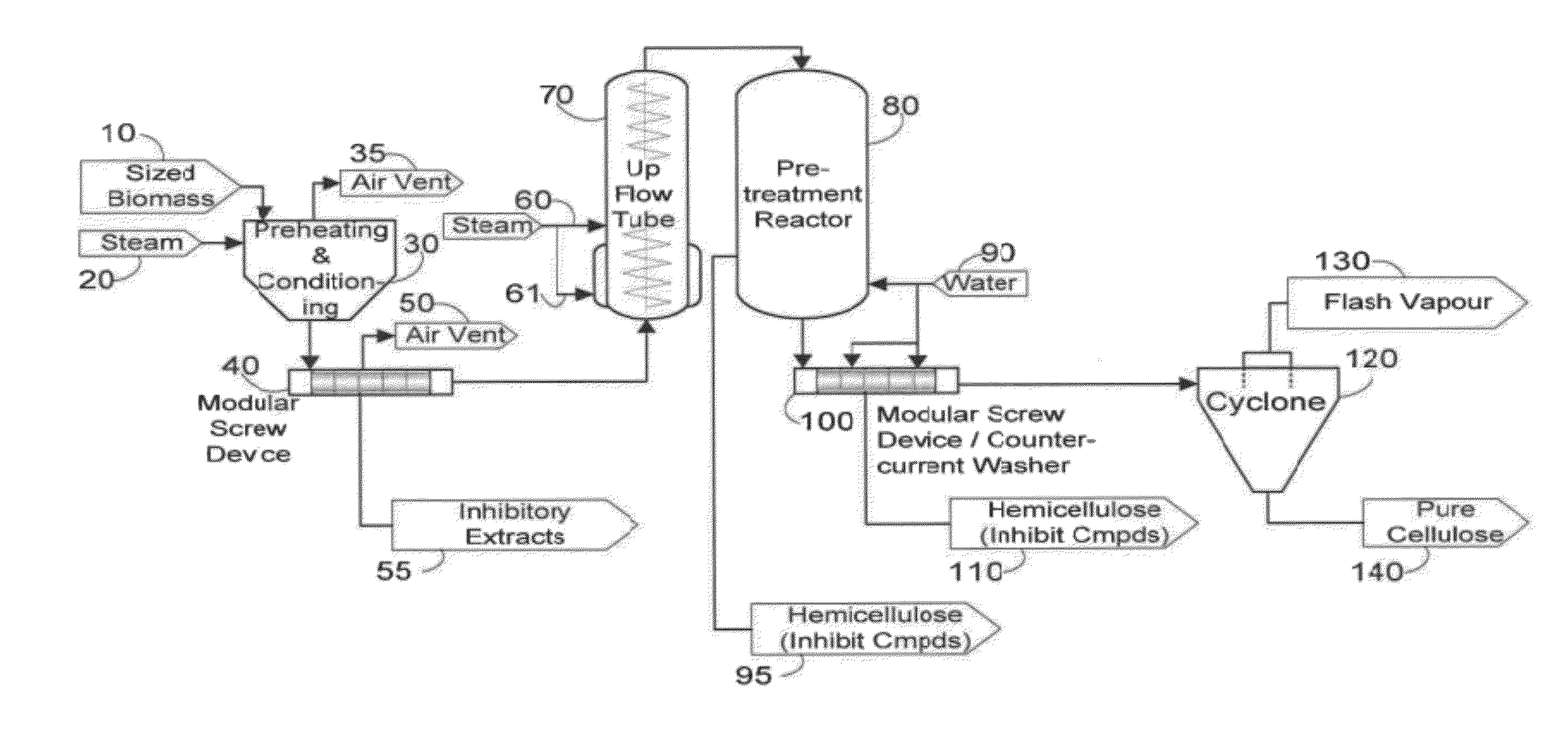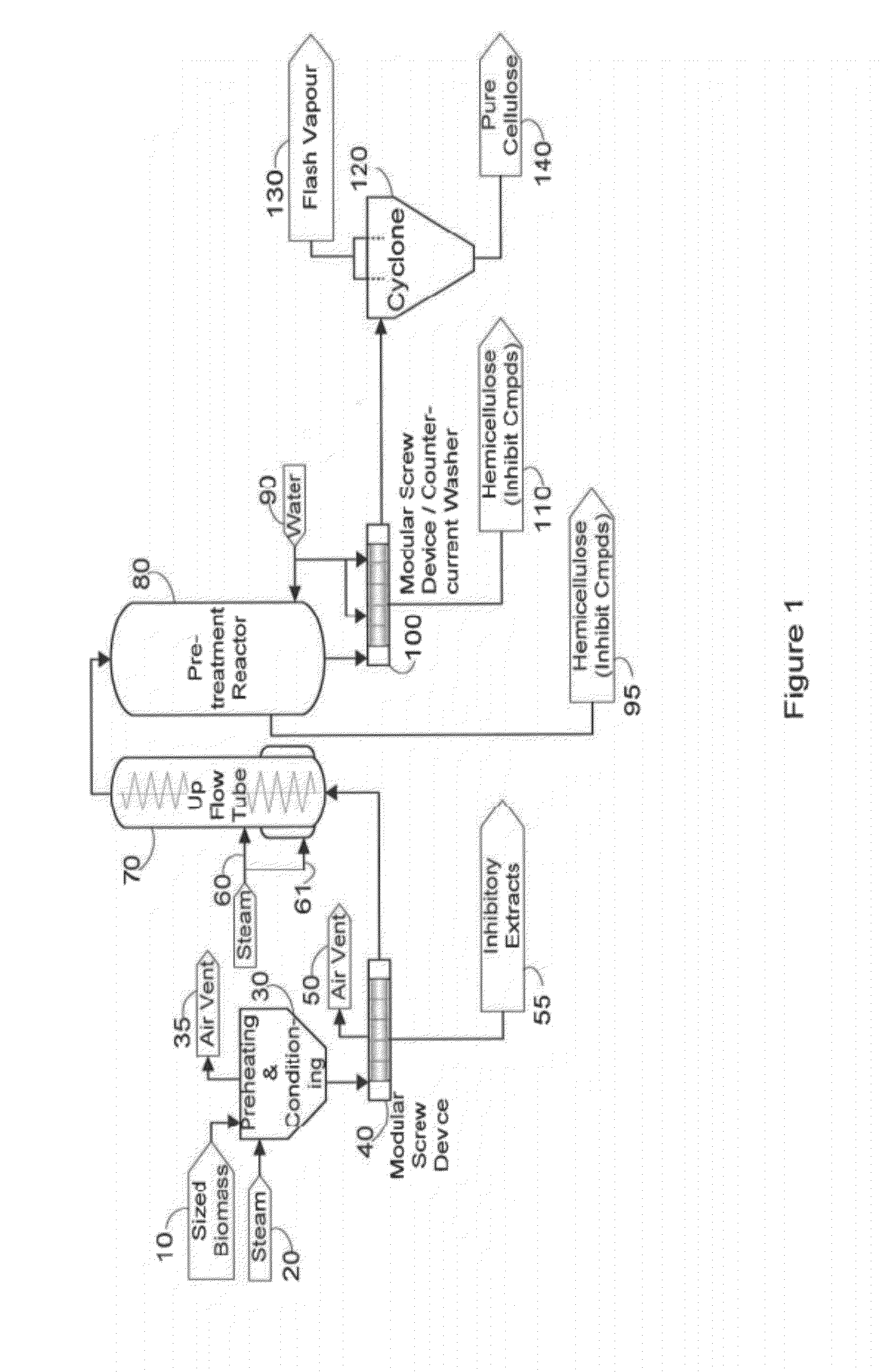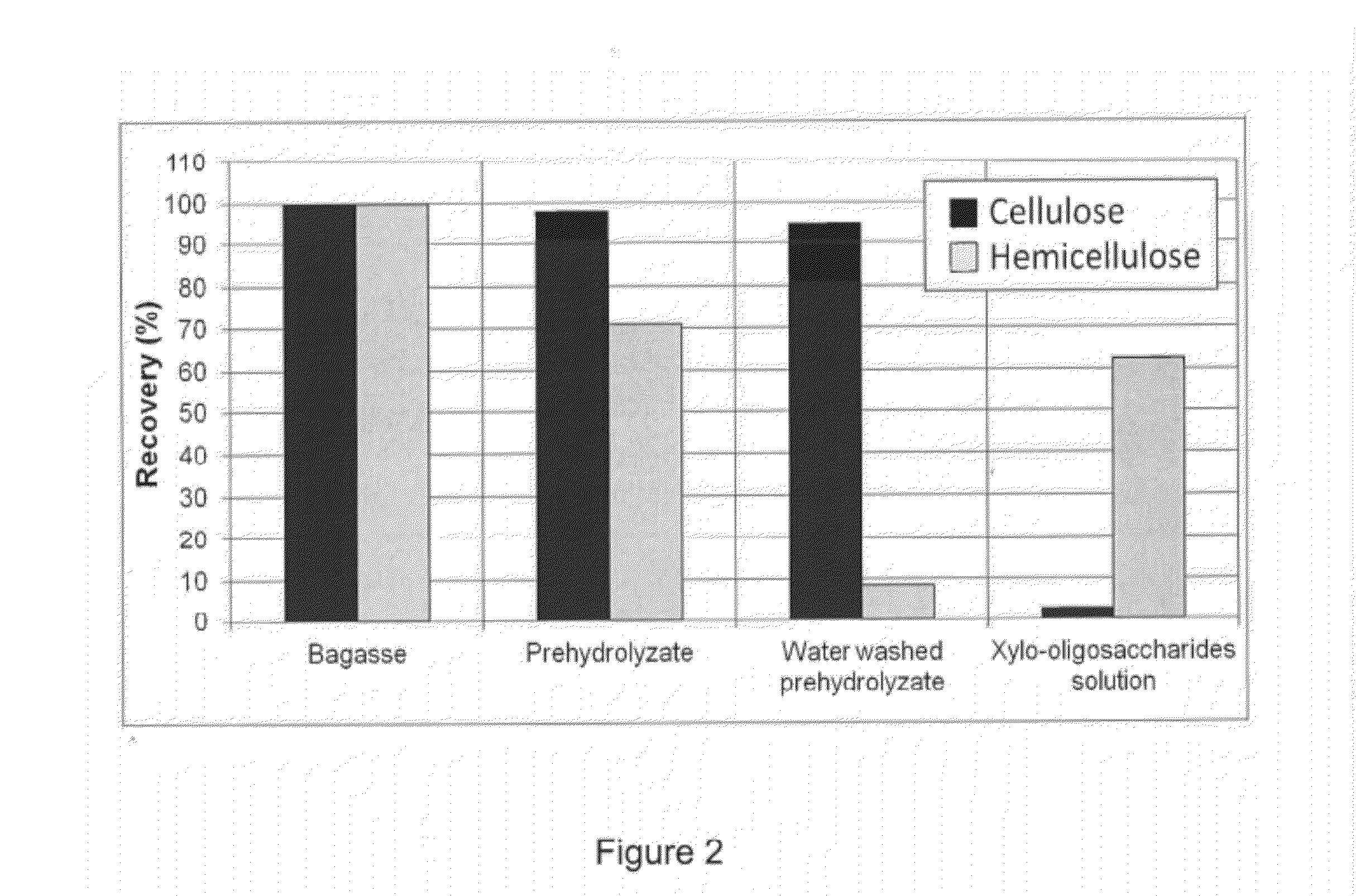Bagasse fractionation for cellulosic ethanol and chemical production
a cellulosic ethanol and fractionation technology, applied in the field of lignocellulosic biomass production ethanol, can solve the problems of less accessible cellulose enzymatic hydrolysis and difficult pretreatment of bagasse, and achieve the effects of minimizing water use, reducing waste, and reducing the amount of washing/eluent added
- Summary
- Abstract
- Description
- Claims
- Application Information
AI Technical Summary
Benefits of technology
Problems solved by technology
Method used
Image
Examples
example
[0077]In the following example, reference numbers refer to features of the pre-treatment system and process streams, as shown in FIG. 1.
[0078]Continuous steam explosion pretreatment of bagasse is carried out in a continuous steam gun explosion pretreatment system (FIG. 1).
[0079]50% to 70% moisture bagasse fibers (10) are received and fed through a V shaped hopper and screw auger (not shown) using a feed rate of 40 kg bagasse fibers per hour on a dry matter basis.
[0080]Bagasse fibers are preheated with live steam (20) at atmospheric pressure, in a holding bin or pre-heating and conditioning container (30) to a temperature of 95-100° C. for about 10-60 min. Moisture content is adjusted to 75-80%. Air and steam are vented through an air vent (35) from the pre-heating and conditioning container (30).
[0081]Preheated bagasse fibers are compressed in a first modular screw device (40) to remove air (50) through an air vent and inhibitory extracts (55). The bagasse fibers are then fed into a...
PUM
| Property | Measurement | Unit |
|---|---|---|
| pressure | aaaaa | aaaaa |
| pressure | aaaaa | aaaaa |
| temperature | aaaaa | aaaaa |
Abstract
Description
Claims
Application Information
 Login to View More
Login to View More - R&D
- Intellectual Property
- Life Sciences
- Materials
- Tech Scout
- Unparalleled Data Quality
- Higher Quality Content
- 60% Fewer Hallucinations
Browse by: Latest US Patents, China's latest patents, Technical Efficacy Thesaurus, Application Domain, Technology Topic, Popular Technical Reports.
© 2025 PatSnap. All rights reserved.Legal|Privacy policy|Modern Slavery Act Transparency Statement|Sitemap|About US| Contact US: help@patsnap.com



